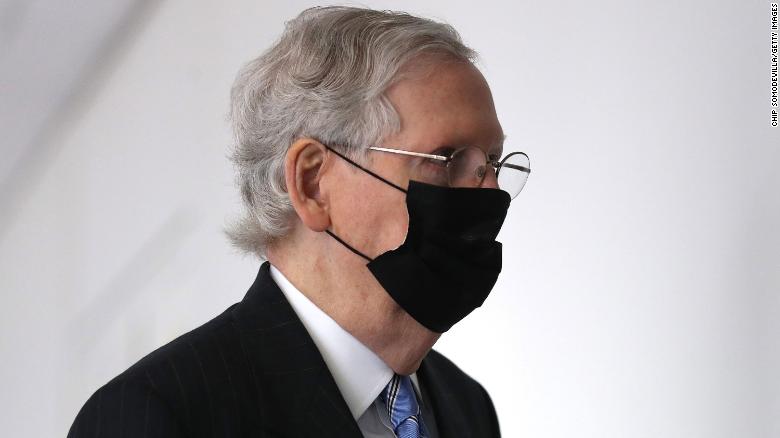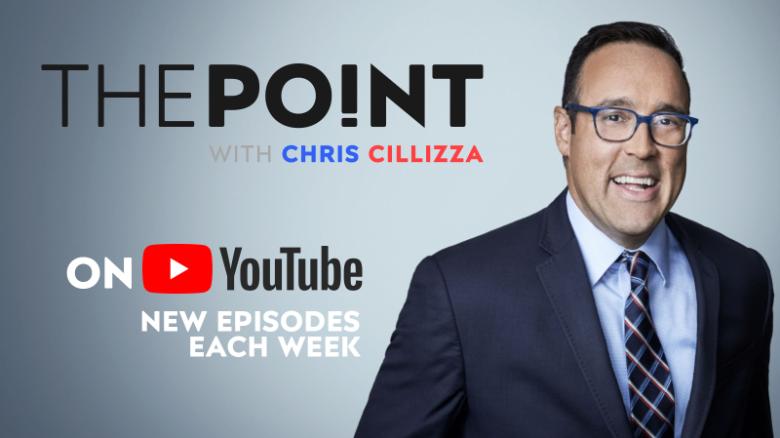Joe Biden Has Problems. The World Has
Solutions.
From the founding fathers to Silicon Valley, the U.S. has a
long tradition of borrowing the best ideas from around the globe.
By John Micklethwait and Adrian Wooldridge
November 29, 2020, 6:00 AM GMT
Adrian Wooldridge is the political editor of the Economist
and author of its Bagehot column.
The worst thing that President-elect Joe Biden can do right
now is to spend any more time with election lawyers. The irritations of
President Donald Trump’s unseemly rearguard action are already fading away. The
challenge of governing the country will only grow. The ugly truth is that the
new president’s inheritance is a much tougher one than most of Biden’s
supporters realize — on two counts.
First, as Covid-19 has revealed in painful detail, the U.S. is falling behind much of the
world, not just in health care but also in most of the functions of government.
Second, little of this falling behind is really Trump’s fault. The disruptive
child being dragged out of the White House is more a symptom of what ails
the U.S. than a cause. Merely removing him will not solve much.
From this perspective, Biden should do what other great U.S.
presidents have done when their country has started to fall behind: Look abroad and copy what works.
For all the talk about American exceptionalism, the best
American leaders have never been ashamed of learning from abroad, especially in
times of trouble. The founding fathers carefully studied the world’s most
successful political systems, particularly those of Britain, France and ancient
Rome. James Madison pored over comparative constitutions while at Princeton,
while John Adams and Thomas Jefferson drew on their experience as envoys to
France.
A century ago, the
Progressives stole ideas from Europe: President Woodrow Wilson even began
writing a universal history of the state in order to redesign U.S. institutions
for a post-laissez-faire age. During the Great Depression, President Franklin
D. Roosevelt based Social Security on foreign pension systems and turned to
John Maynard Keynes for economic ideas. President Lyndon B. Johnson borrowed
the phrase “Great Society” from
another British academic, Graham Wallas, while the Ronald Reagan administration
borrowed “privatization” from
Margaret Thatcher. America’s most influential statesman of the late 20th
century, Henry Kissinger, based much of his diplomacy on the European
concept of balance of power.
Nowadays, Kissinger still draws on Metternich and Talleyrand
when he thinks about the U.S.-China relationship, but in terms of public policy
he is a cosmopolitan exception. Washington, sadly, has stopped learning from
abroad in terms of ideas and has become the rich world’s most parochial capital
city.
The lobbyists and lawyers who infest the town are
preoccupied with exploiting their knowledge of the intricacies of the U.S.
system to win advantage for their clients. Of course, a president whose foreign
policy was summed up by “America First” has not helped, but Trump’s
blinkeredness is hardly unusual. With John McCain gone, can you name a
senator who understands what is happening in the rest of the world?
No, neither could we.
The contrast with the
private sector is especially stark. U.S. businesses still steal ideas
from around the globe: Silicon Valley and Wall Street suck in foreign-born
talent. But politicians in
Washington are obsessed with their bases,
which, given the U.S. primary system, means a highly ideological sliver of
the population. Not that the media are much help: One U.S. newsroom assumed
the fireworks that exploded over London on Nov. 5 were to celebrate Trump’s
removal, apparently unaware that Guy Fawkes Day has been celebrated by Britons
for centuries.
The history of great
empires that have turned inward is not a happy one. The next president
always needed to confront this — but Covid-19 has shown that this insular U.S.
has fallen much further behind than even pessimists appreciated.
The global pandemic has been, among many things, a global
test of government capacity. Last week Bloomberg News published its study of
“virus resilience.” The U.S. came in 18th of 53 nations. It would have been far
lower, if not for its private sector’s success in producing vaccines. On the
basic Hobbesian test of keeping its people alive, the American Leviathan has
failed.
The U.S. is closing in on 800 deaths for every million
people. That is a slightly better record than Britain and Belgium, but it is
far worse than most of its allies. Germany, with 170 deaths per million, has
done six times better. But the really
shocking comparative numbers come from East Asia, where plenty of
governments that a generation ago looked across the Pacific to the U.S. as the
great role model have now outperformed their erstwhile exemplar.
Japan has lost fewer than 2,000 people, or a hundredth of
the U.S. death toll, despite having an elderly population and a supersized
capital city. Taiwan has gone more than 200 days without a domestic case of
Covid-19. Singapore is beating itself up because its mortality rate is edging
close to five deaths per million.
Perhaps most pointedly of all, Even allowing for Beijing’s
sluggish start in dealing with the virus, and throwing in some skepticism about
its official death toll of just three deaths per million, it has plainly been
far better at protecting its people from dying than the U.S. And the rest of
the world has seen it.
There are two lame excuses for this — both of which Biden
should dismiss. The first is that high U.S. mortality rates are part of the
price you pay for freedom and democracy. Though China’s success certainly has
something to do with autocracy, all the other countries at the top of the
Covid-19 league tables are also freedom-loving democracies; they’re just better-organized
freedom-loving democracies than the U.S. For instance, New York City and Seoul are both lively cities with crowded subways
and a wild nightlife. But New York has lost more than 22,000 people, while Seoul
has lost a few dozen.
East Asia’s supremacy at Covid-19 was not a fluke. Look at
the global rankings for high schools and
health care: East Asian countries are clustering at the top alongside the
Scandinavians. Or look at infrastructure.
The gap between Asian airports and New York’s La Guardia or JFK are obvious to
any traveler, but just as striking is the gap in the underlying wiring: Some three-quarters
of the world’s “smart cities,” which
have updated their infrastructure for the internet age, are in Asia.
For nearly 50 years, Asian countries, led by Singapore, have
been quietly building smarter and better
governments in the same way that Toyota and Honda once built smarter and
better cars. The difference is that, while Detroit and the rest of U.S.
industry eventually copied Japan’s “lean manufacturing” so they could
fight back, Washington’s politicians
have not copied Singaporean lean government; indeed, they barely know what it
is.
The second excuse that Biden should dismiss is that
America’s failures are all Trump’s fault. The outgoing president may have
actively obstructed U.S. attempts to deal with Covid-19, but he did not create
a health system that was designed to
help the old and the rich, not the poor. A pandemic was always bound to
expose that. All those people who died in New York City did so under a
Democratic mayor and a Democratic governor.
The same goes for many other things where the U.S. is
falling behind the rest of the world. Trump said some unhelpful things after
George Floyd’s death, but he did not invent
racist policing — one of us covered the Rodney King riots nearly three
decades ago. Polarized politics? Poor
schools? A convoluted tax system? Trump hardly made any of these problems
better, but the U.S. public sector started falling behind its peers long before
he even became a reality TV star.
With a little reading, the president-elect could discover
that other countries are doing plenty of clever things that the U.S. could
copy. Formerly socialist Scandinavia
is a world leader in contracting out parts of the public sector to the
private sector, including in sensitive areas such as health care and
education. Germany has an exemplary
decentralized health system that covers everyone at a fraction of the cost
of the U.S. system.
India has given every
citizen — more than a billion people — a digital identity that can
be used to deliver benefits to a population that has high levels of illiteracy.
Tiny Estonia has made it possible to
do a host of things online, including voting, filing tax returns,
participating in the census and setting up businesses — enough to save about
2% of gross domestic product through efficiency.
So many other governments are clearly doing better than
Washington. But East Asia presents the most pressing challenge, not least
because China has the potential to
rival the U.S. as the center of the global economy. Its schools are following Singapore’s tactics of promoting
good teachers, firing bad ones and using tests to monitor the system. Its
15-year-olds sit at the top of the
Organization for Economic Cooperation and Development rankings for reading, science and math; their U.S. equivalents
languish in 14th, 19th and 38th places, respectively. Yes, China cheats by
including only four cities, but no one thinks American students come close —
and the U.S. results look especially lousy given that it outspends most of
its rivals.
If a dysfunctional
public sector is a geopolitical liability for the U.S., it is also a political
liability for Biden’s Democratic Party. The Democrats can claim that,
unlike the destructive Republicans, they believe in government and the good
that it can do. But in practice, they are the political arm of public-sector
unions that will move heaven and earth to save their members from being fired.
Democratic Presidents Bill Clinton and Barack Obama managed
to introduce a few reforms, but they got far less than they wanted. Despite
increased charter schools and merit pay, it’s still very difficult to reward
good teachers and fire bad ones: Every year, incompetent and even criminal
teachers are shuffled from school to school (“the dance of the lemons”) or allowed to spend their days doodling in
city offices (“rubber rooms”).
Biden is in an unusually good position to break this dismal
pattern. With 30 years on the Senate’s Foreign Relations Committee, he knows as much about “abroad” as anybody.
As a moderate Democrat, he can position himself at the vital center, between the old left, which is tied to the unions,
and the do-nothing Republicans.
At 78, he’s unlikely to run for a second term (which would
mean asking Americans to keep him in the world’s most difficult job until he’s
86), so he probably has unusual freedom to reform the public sector. This is
surely where most Americans also belong: More
than 60% of voters, including a majority of Democrats, tell pollsters that
they support serious structural reform of government.
So look around the world, Joe: Set up an office to study
what works in other countries; copy the best and avoid the worst; build back
better not just on the basis of U.S. examples, but foreign ones too. China is a
particularly important example to study. Not only can it teach the U.S. a thing
or two about how to build airports and harness the power of the internet of things,
but it can also teach what happens when countries become complacent and
parochial.
When Columbus reached the
Americas on the
Santa Maria in 1492, China accounted for a fifth of the world’s economy, it and boasted the world’s most sophisticated
government and its most powerful navy (some Chinese ships were more than 400
feet long, to the Santa Maria’s 70 feet). But eventually, complacency set in: While European
states fiercely competed against each other, copying technology and ideas to
improve their administrative and military machines, China atrophied, with
mandarins learning the same Confucian texts decade after decade and century
after century, and emperors turning their backs on the world.
In 1525, China destroyed its world-beating
fleet, setting fire to some ships and leaving others to rot, in order to
prevent the country’s purity from being contaminated by contact with other
countries. In 1792, the Qianlong
emperor famously dismissed a British envoy, George Macartney, who had come
bearing a treasure trove of gifts in an attempt to persuade China to open up to
trade: “We have never valued ingenious articles, nor do we have the slightest
need of your country’s manufactures.”
Within
a generation, China was a plaything of foreign powers. The modern Chinese have
learned from that lesson. Has Joe Biden?
John Micklethwait is the editor in chief of Bloomberg;
Adrian Wooldridge is the political editor of the Economist. They are the
co-authors of “The Wake-Up Call: Why the Pandemic Has Exposed the Weakness of
the West, and How to Fix It,” published by Harper Via and Short Books.
This column does not necessarily reflect the opinion of the
editorial board or Bloomberg LP and its owners.
To contact the authors of this story:
John Micklethwait at micklethwait@bloomberg.net
Adrian Wooldridge at adrianwooldridge@economist.com
To contact the editor responsible for this story:
Tobin Harshaw at tharshaw@bloomberg.net



